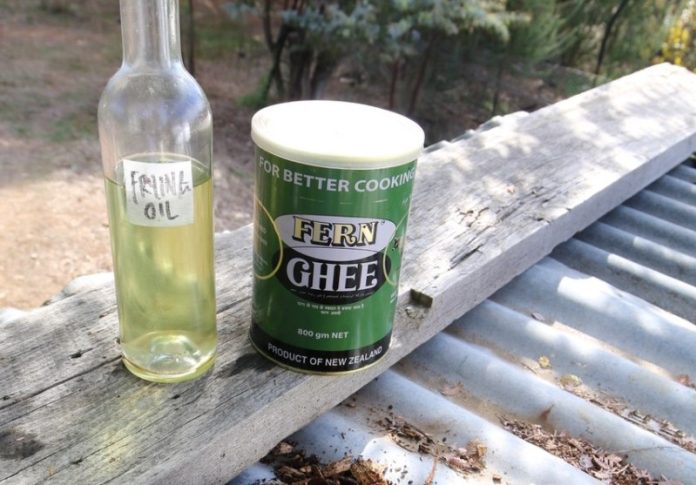
The conventional wisdom, according to most composting resources, is to not put fats and oils into composts. Why is it that composting lipids (fats, oils and waxes) is considered a no-no, and what would we do with them if we don’t compost them?
The main explanation for keeping lipids out of compost piles is to avoid attracting rodents. Regular Compost Conversation readers already know how to deal with that from earlier articles; high temperature for hot composters, and rodent mesh under a Gedye-style bin for cool composters. So, good composting practice deals with that concern.
The other reason given is that lipids can smother a compost pile, starving beneficial microbes of oxygen and creating anaerobic conditions that favour stinky, methane-producing bacteria.
This is a well-founded concern. I think we all know intuitively that tipping a deep fryer load of used cooking oil or a tub of rancid lard into our compost will have a pretty devastating effect, at least in that part of our pile.
So, are lipids just no good as compost microbe food? On the contrary, recent research has shown fats and oils to be a compost super-food, as in human diets, fats and oils in moderation play an important role in health and are a very high energy food source.
The issue is how to deal with their texture that tends to smother a compost and block air flow.
A little bit of butter on left-over toast, fat trimmings from meat (chopped up well) or cooking oil wiped out of a pan with a bit of newspaper are all fine, and a healthy compost pile will be happy to receive these offerings dotted through a diversity of other compost ingredients. We run into problems when we have a lot of oil or fat to dispose of, all at once.
Larger quantities of oil or fat are best combined with another, highly aerating compost ingredient – like wood chips – before adding them to the pile. Solid fats may need to be gently heated to liquid to do the combining well.
I do this ‘combination mix’ by blending the fats or oils with the wood chips in a separate bucket before adding very thin layers to the compost.
If dealing with a particularly large quantity of waste fat or oil, it will be best to add our ‘combination mix’ to the compost over several weekly additions, avoiding there being one particularly oily or fatty section in our pile. The key is moderation.
If poured down the sink, lipids will coat and clog our drainage pipes and we will be paying for those ‘fat-bergs’ we have made to be removed some time down the track. If we put them in the land-fill bin, we not only lose the benefit of that quality microbe food from our soil, but will also be pushing up our landfill emissions too.
With care and attention, mixing waste lipids into our compost piles is a great way to make use of these valuable resources.
– Joel Meadows works with *Yes In My Back Yard, (YIMBY), a community-scale composting initiative in Castlemaine and surrounds. Send questions or comments to hello@yimbycompost.com, or to book in for a compost workshop.







